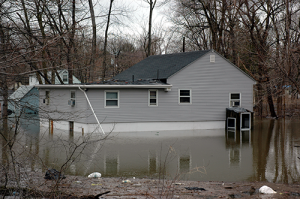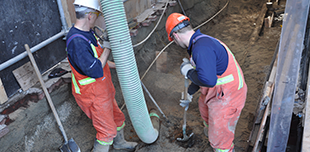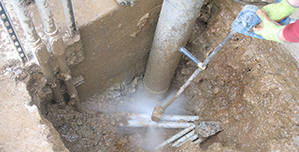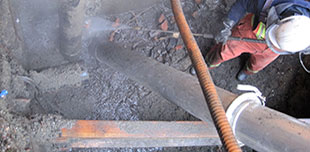If you’ve got a building with a basement, keeping water out of it is a considerable challenge. The number one hero in the fight to maintain a dry basement is the weeping tile – a porous pipe buried around the footings of the building foundation designed to route groundwater away from the walls. This water is taken either to a catch basin or to a sump pit in the basement, where it is sent on its way by a mechanical pump.
 In older buildings, clay weeping tiles were used, while newer construction employs corrugated polyethylene piping, called “Big O” and perforated PVC piping. Clay tiles can degrade over time, while silt and other solids can clog all types of perimeter drainage. When this happens, the tiles no longer remove groundwater from around the foundation, and water is allowed to stand outside the footings of the home. Leaks will form, generally at the seam where the basement walls meet the slab of the floor, though water might also seep up from underneath (due to the hydrostatic pressure that’s increased when the normal “escape” is blocked) and come through cracks in the floor.
In older buildings, clay weeping tiles were used, while newer construction employs corrugated polyethylene piping, called “Big O” and perforated PVC piping. Clay tiles can degrade over time, while silt and other solids can clog all types of perimeter drainage. When this happens, the tiles no longer remove groundwater from around the foundation, and water is allowed to stand outside the footings of the home. Leaks will form, generally at the seam where the basement walls meet the slab of the floor, though water might also seep up from underneath (due to the hydrostatic pressure that’s increased when the normal “escape” is blocked) and come through cracks in the floor.
Common fixes for this problem involve weeping tile excavation and replacement, which is quite expensive, or digging up the floor next to the walls and installing new tiles, which costs less but can be less effective.
Modern Video Line Inspection and Hydro-jetting technology can be used to examine the weeping tiles around your foundation, and remove many clogs in your perimeter drainage system. Edenflo has trucks with equipment that can open your weeping tiles with water jets, while simultaneously removing the water and debris released by the jetting action.
If your basement is leaking, or if you’re interested in preventing problems with your perimeter drainage system, call Edenflo at 604-575-1414 or fill out our online request for service.








